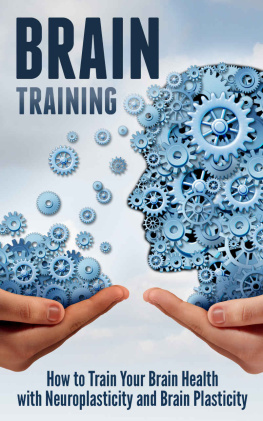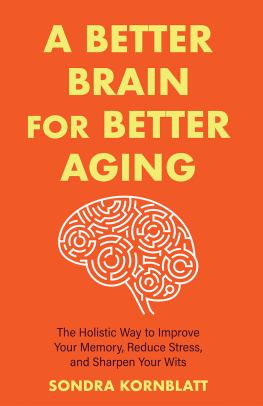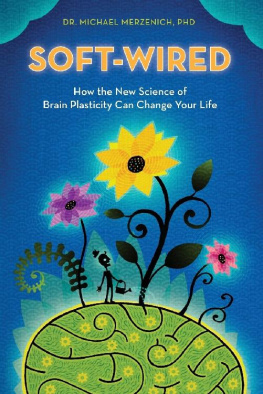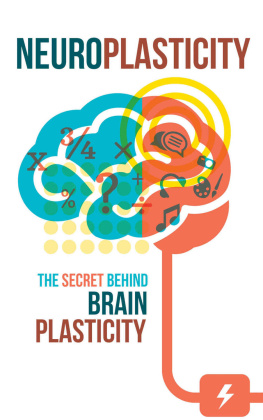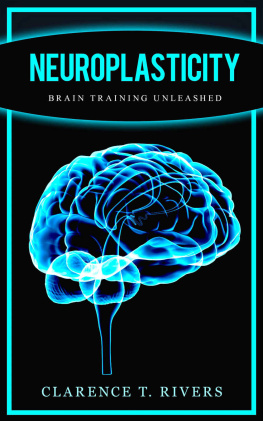Brain Training
How to Train Your Brain Health with
Neuroplasticity and Brain Plasticity
Table of Contents
Introduction
The brain contains millions of neurons (also called brain cells) that are necessary for our learning, cognition and memory retention. However, neurons die and the brain does not generate more of it unlike other cells in the body. This can lead to memory loss and the reduction of our cognitive skills. From the moment that we are born, we lose few neurons and the death of brain cells does not stop only until our death.
Although scary as it may sound, losing neurons is not such as bad thing and it is a crucial part of the healthy function of the brain. The cells in our bodies undergo a programmed cell death which is also called apoptosis. It is important to take note that brain cells are quite metabolically expensive for the brain to maintain thus it needs to keep getting inputs as well as send signals in order to avoid being engulfed by the body through apoptosis. The thing is that it needs to be used otherwise it will get culled. In fact, the neurons that you have left can actually take care of everything that you need to learn and remember for the rest of your life. The trick here is how to keep your brain healthy.
There are many ways to keep your brain healthy but aside from proper diet and getting enough sleep, brain training is a great way to maintain or improve your neural connections. The thing is that if you exercise your brain, it fires up signals to the neurons thus creating more branches called neural connections that can help you remember things, prevent cognitive loss and also improve your learning capabilities. Thus, this book will discuss what it is that you need to know about brain training.
Chapter 1: The Basics of Brain Training
Since the beginning of time, our ancestors have been brain training themselves by doing their daily tasks. In fact, brain training has resulted to better cognition and this is the reason why we are enjoying modern comforts. The thing is that brain training has allowed our ancestors to think of inventions and innovations that can make our lives better. This chapter will discuss what it is that you need to know about brain training.
History of Brain Training
The term neuroplasticity was first used by William James in 1890 but this has been observed since 1700s. The first to observe plasticity in animals was Italian anatomist Michele Vicenzo Malacarne who did experiments on paired animals. In his experiment, he discovered that the animals cerebellums were larger if they were trained compared to those that were not. Unfortunately, the research was largely forgotten since studies related to anatomy and physiology during this era were still emerging and scientific techniques have yet to be developed in the later centuries.
It was the advent of the 19 th century when scientists probed the concept of neuroplasticity. In 1923, Karl Lashley conducted experiments on rhesus monkeys that showed significant changes in the neuronal pathways. He concluded that this is a strong evidence for plasticity. Studies after studies were conducted to replicate Lashleys research. Unfortunately, no tools have been developed yet to further study the mechanisms of brain plasticity.
During 1960s, high resolution microscopes were available that allowed researchers to study the mechanisms of brain. Researcher Eleanor Maguire was able to document the changes in the hippocampal structures that are associated with learning among local taxi drivers in London. This has led to scientists concluding that brain plasticity can be used just like drugs to treat brain-related disorders such as schizophrenia and other conditions that are characterized by cognitive impairment.
Mechanisms or Neurobiology of Neuroplasticity
The main principle behind neuroplasticity is linked to the idea of synaptic pruning. Synaptic pruning refers to the removal and recreation of individual neural connections in the brain based on how they are used. According to scientists, neurons that are fired together are wired or rewired together depending on the needs of the brain. This means that if there are two neurons that produce the same impulse together, their cortical maps may merge. This also runs true for neurons that do not produce simultaneous impulses such that they will diverge from their current cortical map to form different ones.
The brain transmits information from one neuron to the other via specialized connections that are called synapses. The synapses between two neurons are called pre- and postsynaptic terminals that are separated by synaptic clefts. Both synaptic terminals are filled with tiny vesicles that contain neurotransmitters that influence different bodily reactions.
Neurons carry the information through electrical impulses which travels through the body towards the different neurotransmitters. Once the neurotransmitters are diffused across the synaptic cleft, they bind to the receptors and create another electrical signal on the post-synaptic neurons that will fire which causes the neurons to modify itself based on the strength of the existing synapse. The modification of the neurons is then called neuroplasticity. This is the underlying mechanism why our brain has the ability to learn new information all the time without seemingly being overloaded.
By definition, neuroplasticity is the change in the strength of the mature synaptic connections by the formation and elimination of synapses. It also involves the regrowth of new connections following an injury of the central nervous system such as stroke, for instance.
Chapter 2: Applications of Neuroplasticity
The brain is a very power organ and it can store tremendous amounts of information as well as process it. Neuroplasticity has led to several applications that are used by different medical fields. This chapter will discuss about the different applications of neuroplasticity.
Treating Brain Damage
Several researches shows that brain plasticity can improve the recovery of the brain from any injury. In fact many neurologist use brain plasticity in the context of rehabilitating the brain; it is important to take note that the adult brain is not hard-wired with a fixed neural circuit and there are many wirings in the brain that are created in response to injuries. Contrary to what most people believe in, the neural connections does not really die as we age. There are scientific evidences that the cortical as well as subcortical rewiring in our brain is the response to training and injury. There are increasing evidences that neurogenesis (the process of creating new brain cells) can also occur in adult mammalian brains.
In one research conducted in 2006, researchers worked with patients who suffered from stroke which is characterized by the obstruction of the flow of blood on the brain thus affecting the movement of the patient. The research showed that brain injuries caused the reorganization process on the brain thus there is a possibility of using brain plasticity in treating patients suffering from stroke.
The easiest way to conceptualize neuroplasticity as a treatment to brain damage is to view it as a way to re-learn things. Remember that all throughout your life, the brain always rely on fundamental neurobiological process to acquire behaviors, memories and experiences. Thus after the brain injury, the brain still has remaining neural circuits that adapt as well as encode new behaviors. Below are the changes that happen after acquired brain injury once a patient undergoes brain plasticity exercises.
- Increased changes to the synapses such as the synaptogenesis thus the neurons tend to elongate and sprout several projections to create better neural connections.

